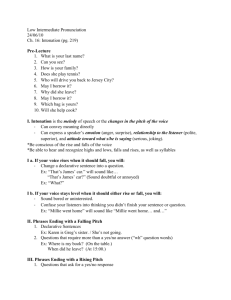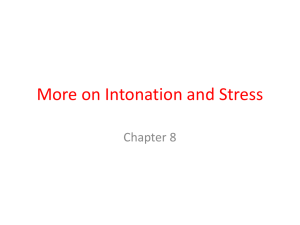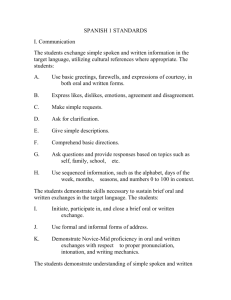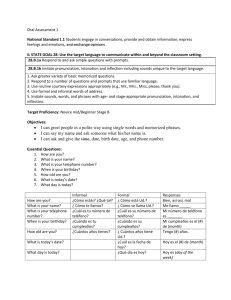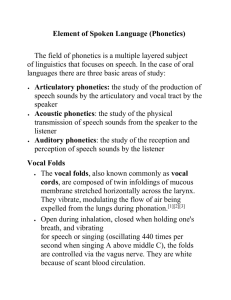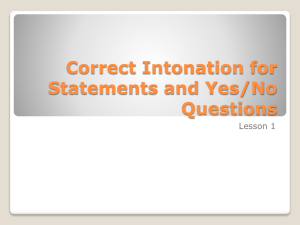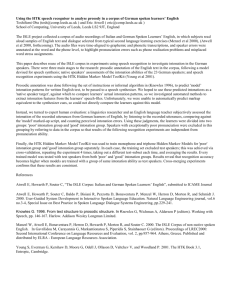Chapter one - Latifah-eng
advertisement
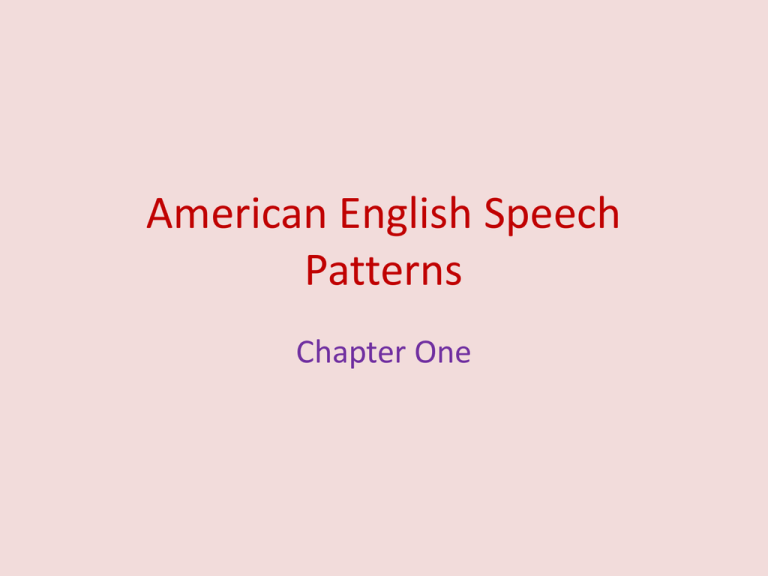
American English Speech Patterns Chapter One Intonation and Stress - In verbal communication, we don’t express ourselves with words alone. In addition to our facial expressions, gestures, and other body movements, our vocal patterns add underlying meaning to what we say. Intonation and Stress -Intonation: The changes in voice during speech. Pitch inflections: the changes in our pitch tones on intonation. Intonation and Stress • Stress: it makes certain parts in a message clearer and more distinct by increasing their loudness and length. - Primary Stress - Secondary Stress Stressed Syllable is spoken longer and louder with higher pitch. Unstressed Syllable is spoken shorter and quicker. Intonation and Stress • At the word level: Pitch rises with its highest level on the syllable with primary stress. - Step inflection - Gliding inflection Intonation and Stress • Beyond the word level: In phrases and sentences, only certain words are normally given stress. (content words). - Content words: like nouns, verbs, adjectives and adverbs - Function words: serve more to provide grammar structure. They include articles, conjunctions, pronouns, and prepositions. Function words are normally reduced and spoken quickly. Intonation and Stress • Falling and rising inflection: -Falling pitch indicates that the speaker has finished a thought. - Rising pitch indicates that the speaker intends to continue on the thought. Example: Wh-questions are spoken with a falling inflection. Yes/No questions are normally spoken with a rising inflection Primary Stress and Final Inflection: Primary stress is normally placed on the last content word. -Stress for Emphasis: Stress is shifted in a sentence to emphasize the words that mean more specifically what the speaker wishes to express. Rhythm Rhythm in speech results from timing in connected segments. - Function words are unstressed and therefore are often spoken with the same timing as unstressed syllables. Thank you
